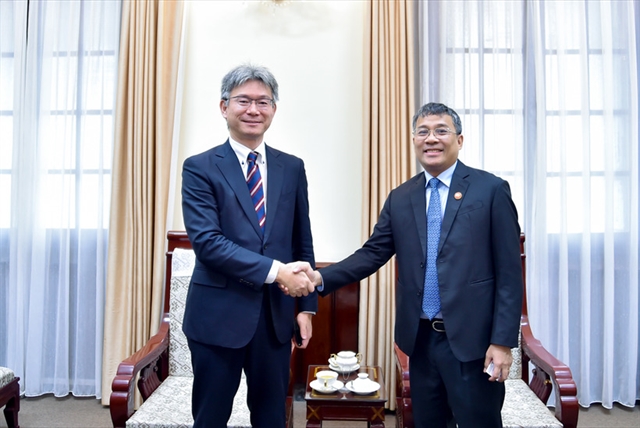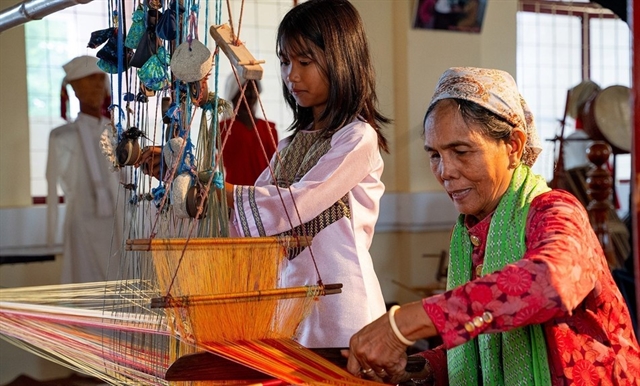 Features
Features

 |
Some popular coal statuettes - unique souvenirs of Quảng Ninh Province. Photo baophapluat.vn
Endowed with the biggest coal reserves in Việt Nam, the northern province of Quảng Ninh is also the birthplace of a unique craft – coal carving.
With their skilful hands, the local carvers turn rough black coal blocks into beautiful sculptural pieces or souvenirs for visitors to the province.
Quảng Ninh's coal carving dates back to the 19th century under French colonial rule. In the beginning, skilled coal miners carved coal for fun and spread the craft from one mine to another.
In the 1990s, coal sculpture flourished, forming workshop clusters in Hồng Hải Ward and a series of shops on Lê Thánh Tông Street in Hạ Long City.
After the Quảng Ninh Handicraft and Fine Art Company and Hồng Gai Cooperative dissolved, many skilled craftsmen set up their own workshops. However, due to the tough nature of the work, the craft is now only practised by a single couple in Hạ Long City and faces the risk of falling into oblivion.
It was not hard to find the workshop of the last coal carvers in the city due to the typical sounds of sawing, chiselling, and carving coming from inside.
Set at the foot of a limestone hill, the 20-year-old facility, which is barely 30 sq.m, is covered with coal dust and littered with tools.
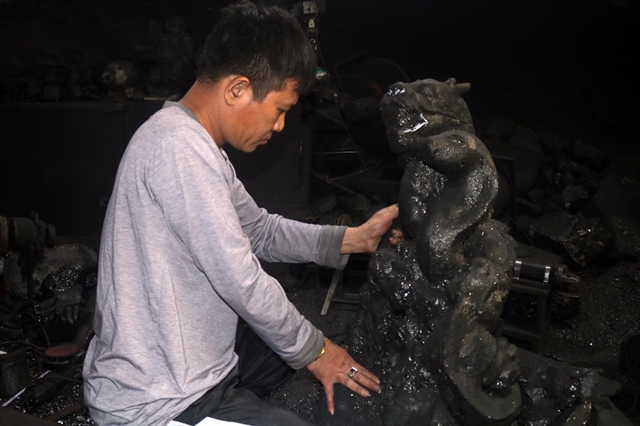 |
Quyết is the third generation of his family practising coal carving. — Photo baoquangninh.com.vn
Born into a family in which three generations have been involved in coal carving, Nguyễn Tuấn Quyết began to practise the craft at 8 years of age.
He and his wife, Nguyễn Thị Thanh Bình, have created thousands of figurines of deer, lions, and the iconic landmark of Quảng Ninh – Hạ Long Bay totally from coal in their small workshop.
According to Bình, the most crucial part of the craft is choosing the right coal. They only use coals produced by three specific mines in the province because the product is strong and shiny.
After sourcing the suitable material, the following steps include cutting, carving and polishing.
"Since the block is heavy and can only be cut by one person with one saw held in one hand, the cutting process can be challenging for women. Every process must be done manually since the carved product might break and can't be made using machines due to the coal seams," Bình said, adding that a product can take up to 50 days to finish.
According to Quyết, the craft requires meticulousness and persistence.
"Gifted people learn faster, but we can still train those who are not gifted with zero experience. As long as you love your job, you can do it," he said.
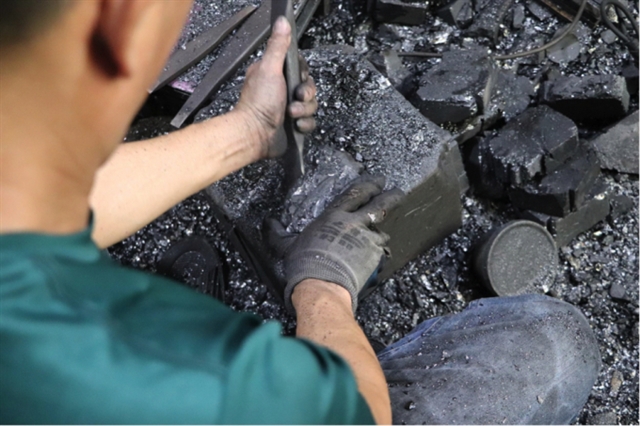 |
According to Quyết, the craft requires meticulousness and persistence. — Photo ongluan.vn
Their main customers are tourists who prefer coal statuettes and companies who order the works as year-end gifts. The profession provides their family with a monthly income of between VNĐ30 – 40 million (US$1,300-1,700)
Risk of oblivion
Quyết and his wife are currently the youngest and the last coal carvers in the province. The elderly artisans have all retired, while the youth are no longer interested in the traditional craft due to its hardship.
"There were 12-15 households that followed the profession about 10-20 years ago, but now only two of us remain in the province. My husband and I are determined to pursue coal carving because this is a traditional craft passed down from our ancestors. However, no matter how hard we try, we can only work for another 10 years before retiring," said Bình, her face smeared with coal dust.
"My family has offered to teach coal carving to young people for free and even provide them with free accommodation and monthly expenses of VNĐ 2-3 million ($86-129), but barely anyone has come."
The couple's two daughters did not want to follow the profession of their parents. As Quyết and Bình are the last two coal carvers in Quảng Ninh, the craft is on the verge of extinction.
They have tried to seek opportunities to promote the craft and pass their skills to younger generations by finding a new direction.
One of the measures they are taking is constantly introducing their works on social networks, which helps them access new customers and spread enthusiasm to the younger generation.
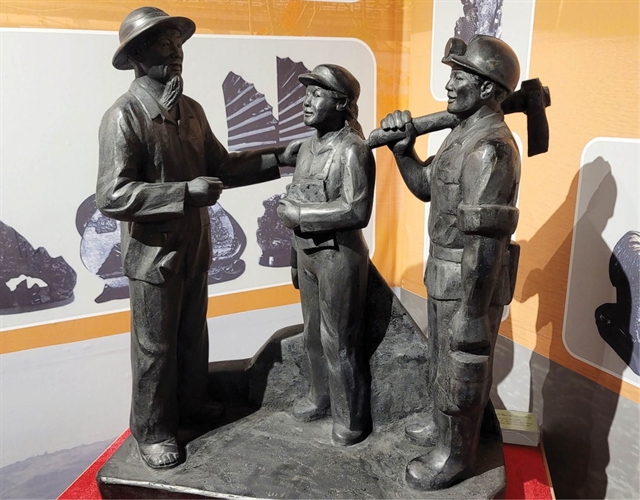 |
Their works were introduced to the public at an exhibition featuring Quảng Ninh's coal carving held in Thừa Thiên - Huế Province last year. — Photo baothuathienhue.vn
Their works were introduced to the public at an exhibition featuring Quảng Ninh's coal carving held in the central province of Thừa Thiên - Huế from July to September last year.
Before the outbreak of the pandemic, not only domestic but also many foreign tourists from China, Japan and European countries visited their workshop to buy and bring home unique coal souvenirs. However, due to the decline in customers in the past two years of the pandemic, they have downsized their production.
"Coal carving exists only in Quảng Ninh Province, a region of coal mines. I hope local authorities will provide us with capital and training to preserve our signature coal sculpting craft," Quyết said. VNS


